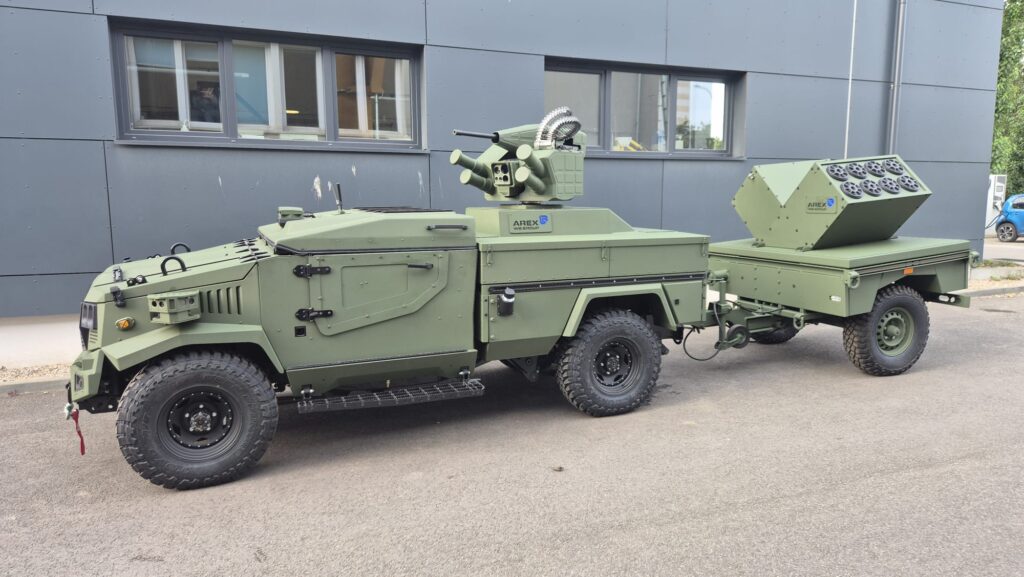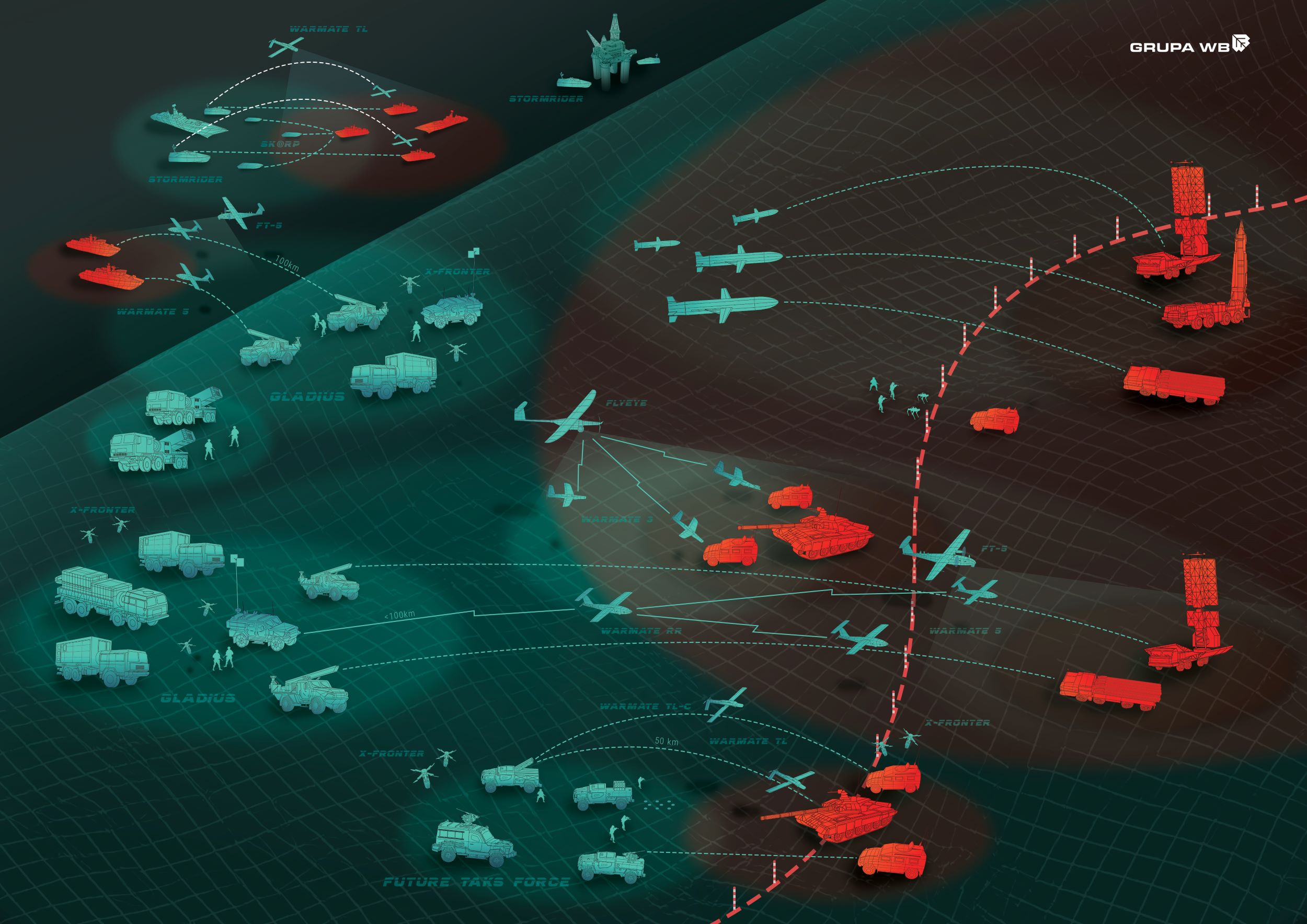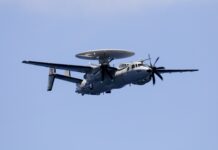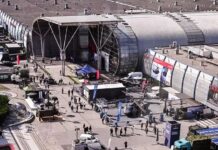MSPO 2025: WB Group presents its vision of a multi-domain task force
Peter Felstead
WB Group used the opportunity of the MSPO 2025 defence exhibition, held at Targi Kielce in Poland from 2 to 5 September, to lay out how its weapons and platforms could bring truly networked capabilities to the Polish and other armed forces under the concept of a ‘multi-domain task force’.
As Remigiusz Wilk, the company’s communications director, explained to ESD at MSPO 2025 on 4 September, a key attribute that WB Group leverages is its position as the largest manufacturer of software-defined radios in Poland. WB Group’s Radmor business, in fact, is part of the consortium whose ESSOR high-data-rate waveform (HDRWF) has been adopted by NATO under STANAG 5651.
Wilk also stressed that WB Group’s multi-domain task force concept places an emphasis on remotely operated, rather than fully autonomous, platforms as this facilitates easier integration with current Polish armed forces doctrine, which largely revolves around manned platforms.
Regarding the land domain, WB Group presented a Future Task Force reconnaissance and strike platoon consisting of a command vehicle, which could be any suitable tactical 4×4, that would be used to control three unmanned ground vehicles (UGVs) based on the manned Aero 4×4 high-mobility, hybrid-propulsion vehicle manufactured by Auto Podlasie. These vehicles could be driven into theatre just like a manned jeep, with their cabins then covered over for unmanned operations as UGVs. Each UGV could then carry on its flatbed either a ZMU-05 remote weapon station (RWS) armed with 12.7 mm heavy machine gun, a launcher for Warmate loitering munitions (either Warmate TL-Cs featuring a 2 kg warhead and/or Warmate TL-R reconnaissance variants featuring an electro-optical sensor in place of the warhead), or an MN-123-type automated mine delivery system (comprising 20 cassettes with five MN-123 mines each). The latter could additionally be mounted on a trailer towed by the UGV.

For the maritime domain WB Group displayed its Stormrider unmanned surface vessel (USV), which is around 8.5 m long and displaces around 3.5 tonnes, which would be supplemented by smaller Sk@rp bomb-laden attack USVs. The Stormrider USV, which can operate in conditions up to Sea State 4, can be optionally manned, allowing for the transport of combat divers, for example, and can be armed with a navalised variant of the ZMU-05 RWS and Warmate loitering munition launchers.
In the air domain WB Group presented its Gladius reconnaissance and strike system, which launches FT-5 tactical reconnaissance unmanned aerial vehicles (UAVs), Warmate 5 and Warmate 20 loitering munitions and BSP-U strike UAVs, all of which are integrated via the Topaz combat management system, along with the company’s hand-launched FlyEye close reconnaissance mini-UAV.
An addition to the Warmate range on display was the Warmate RR, which acts as an attritable radio relay platform.
However, an interesting addition to the WB Group portfolio on display at MSPO was a mock-up of a new cruise missile called the Lanca, which could constitute Poland’s first domestically developed cruise missile. Little information is known about the weapon, but it appears to be designed for containerised launch using a booster before being powered at subsonic speed by a turbojet.









